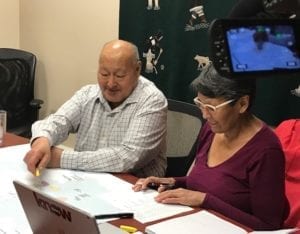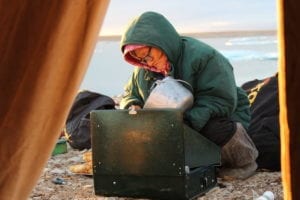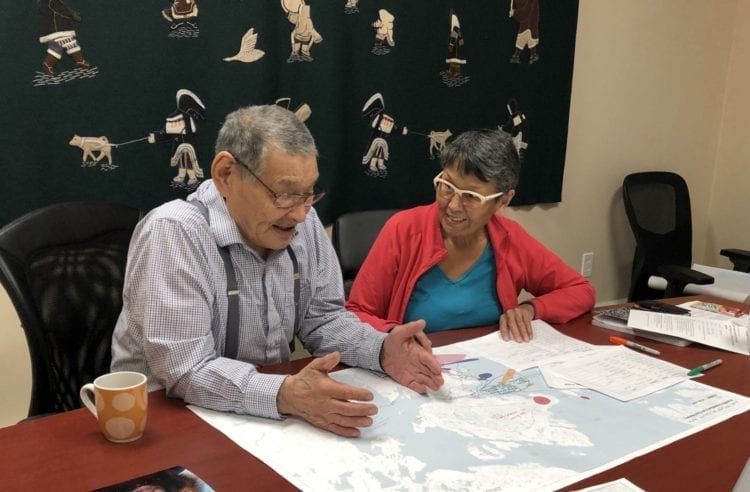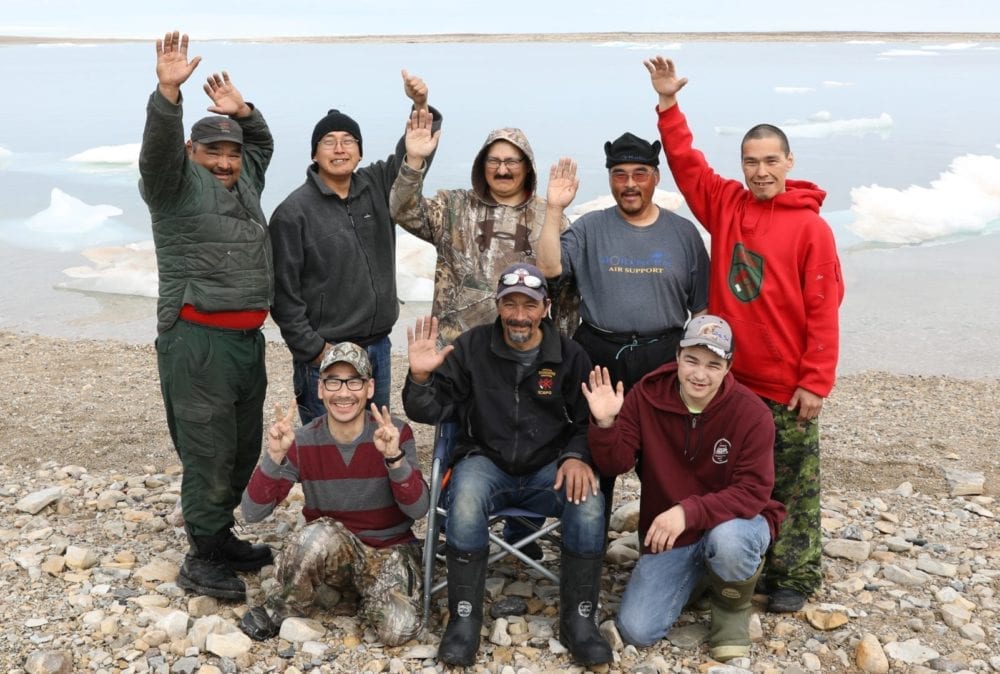Inuit accounts of the Sir John Franklin shipwrecks are being recorded for future generations.

Parks Canada's Franklin Inuit Oral History Project team returned to Gjoa Haven in late February to review maps created based on interviews with 15 Gjoa Haven residents, mostly elders.
They seemed pleased and relieved to be encouraged to tell their stories and share the narrative of their ancestors, according to Edna Elias, the project's leader interviewer.
"As children (and) young adults they were told not to talk about it for fear that lots of qablunaat (white people) would come and take away their land," Elias said. "Many knew (about the Franklin wrecks), and one person had seen the Erebus from the air as long as 40 years ago. The pilot again told the people to keep it quiet."
The guiding hand of renowned Gjoa Haven historian Louie Kamookak, who died in March 2018, was still felt throughout the past year, according to James Qitsualik, the project's field trip expedition leader. Kamookak, a key figure in the discovery of the Franklin ship HMS Erebus in 2014, had already chronicled many Inuit place names.
"He put them on the map and then he finally got the recognition. Where oral history wasn't enough or a word wasn't enough, it had to be proven first on the map and then finally be recognized," Qitsualik said. "I remember (Kamookak) starting to collect these place names, all the Inuktitut names around our area."

Among the hundreds of locations identified in the Inuit language are Sauniqtalik Island, which means place of bones; Qablunaarhiurvik, a place to meet/deal with white people; and Umiaqtalik, which translates as "there is a boat there."
Other than some slight discrepancies in identifying exact locations, Elias said there was remarkable consistency among the recollections of the interviewees.
"A lot of the stories correlated with each other," said Elias, who was representing research firm Know History.
The wreck of the HMS Terror was located in 2016. Franklin and his 128 crew members aboard both ships, searching for the Northwest Passage on behalf of Britain, perished after getting trapped in the Arctic ice in the mid-1840s.
Gjoa Haven Mayor Joanni Sallerina contrasted the fate of the Franklin expedition with that of Norwegian explorer Roald Amundsen and his smaller crew, who received tremendous help from the Inuit over more than two years in the early 1900s, when conditions were better.
Elias said she'd heard about the arduous circumstances of the 1840s during her interviews.
"At the time of Franklin, his crew numbers probably outnumbered the Inuit. Times were exceptionally hard, day-to-day living was to merely survive," Elias said of the plight of the Inuit people at that point in history. "The expedition numbers were too many mouths to feed. Most died off from starvation, mental illness and natural elements for which they weren't dressed for."

The Franklin Interim Advisory Committee, comprising representatives from Inuit organizations, the GN and the heritage and tourism industries, proposed the oral history project in 2016, shortly after the committee was formed, said Tamara Tarasoff, Parks Canada's project manager for the wrecks of Erebus and Terror. Kamookak was a strong proponent, she noted.
"There was a desire to collect this information while the elders were still with us," she said. "The committee wanted to make sure that elders and youth had a chance to interact as part of this project so youth could learn from the elders and keep the stories alive."
Barbara Okpik, a Gjoa Haven youth, said she felt lucky to be involved in the project.
"Seeing the elders out on the land, talking about their lives, their history, and talking about Franklin from our elders' perspective, it's pretty cool," said Okpik, who joined an August 2018 field trip to Terror Bay. "It's really amazing to me that I've been part of this."
Tarasoff said there's an "incredible pride" in Inuit culture in Gjoa Haven to accompany the "incredible body of knowledge."
The interviews will be compiled in a book manuscript that will be available in Inuktitut, English and French. Some of the content will also be uploaded to the internet.
Interviewees were given copies of their videotaped interviews and personalized maps created through their shared knowledge of places.
"So the project continues within the families," Tarasoff said.
